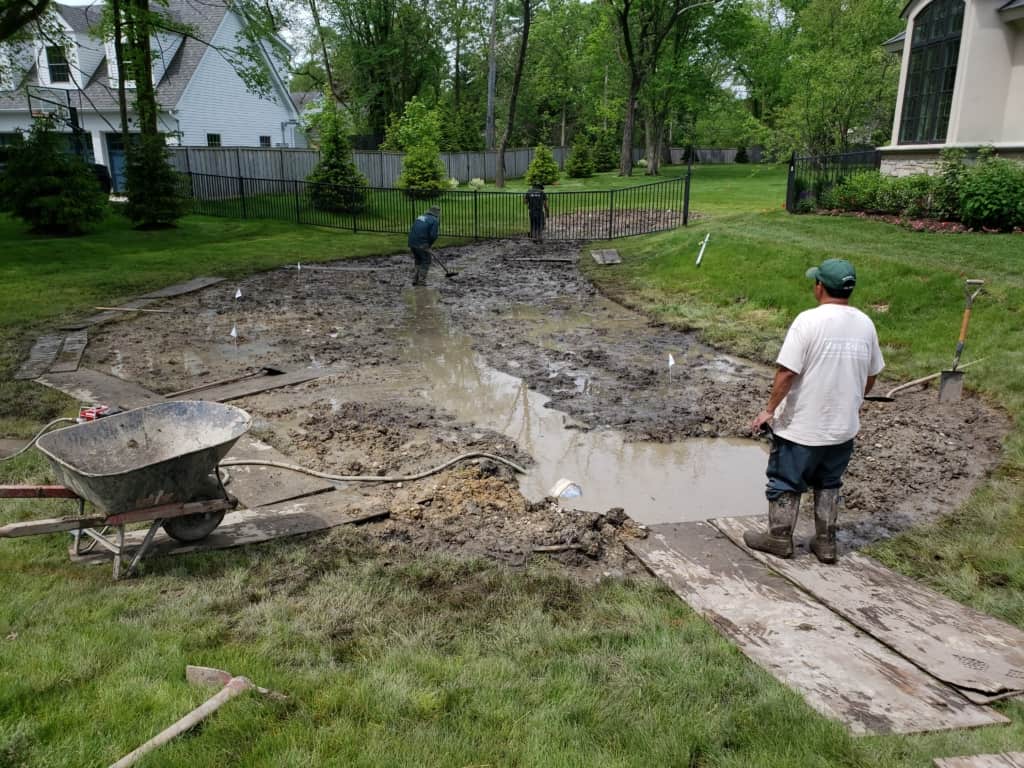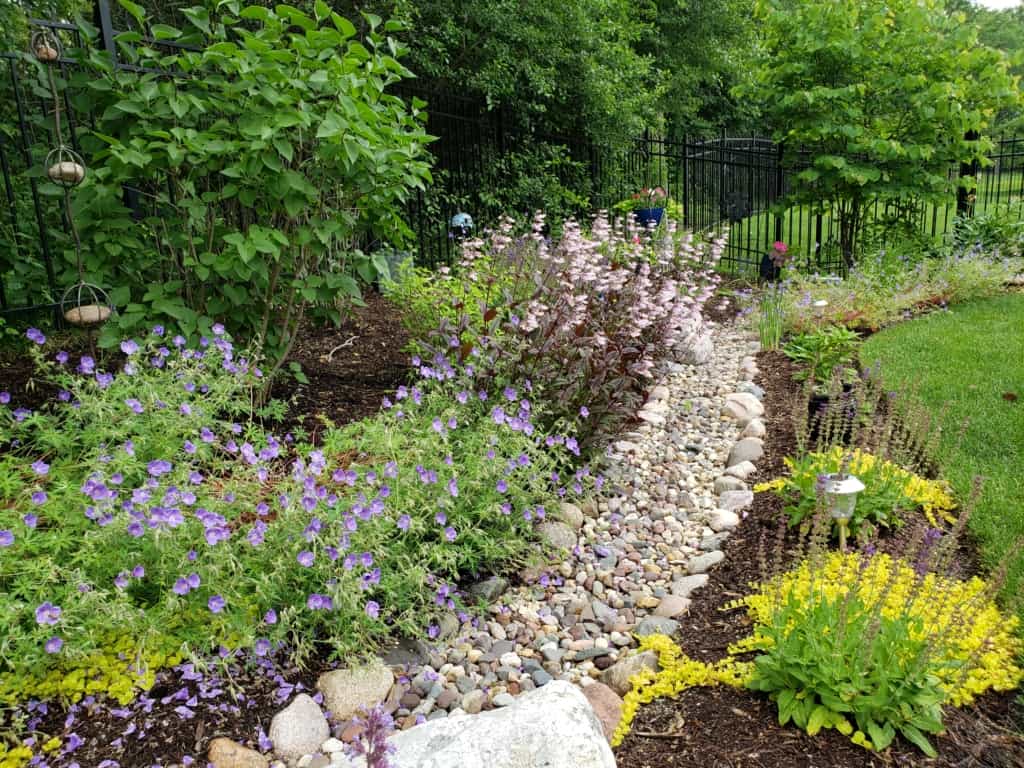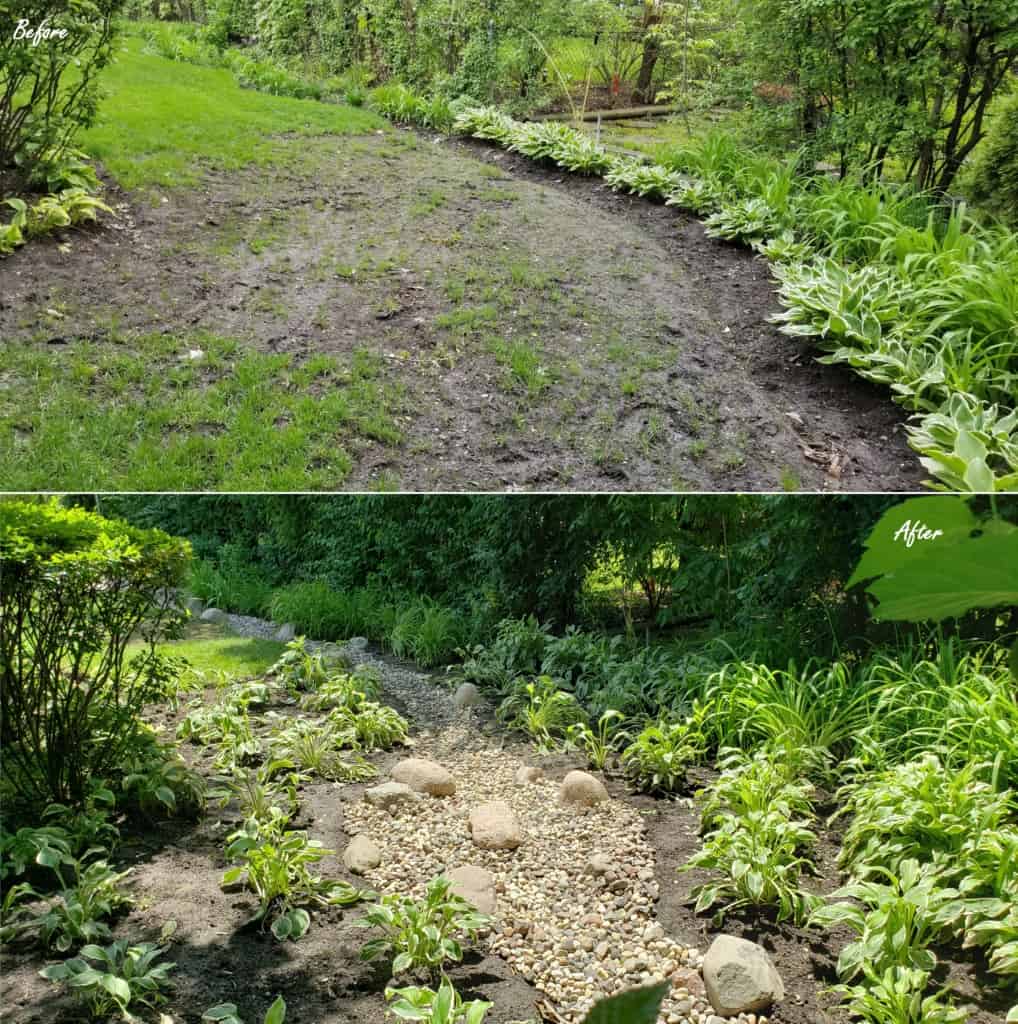How to Fix Backyard Drainage Problems The Right Way
This saying is true, but it also reveals any drainage issues that may be present in the landscape. Tackle them now so that you can enjoy the rest of the season in your garden.
April showers bring May flowers
Design Foundations
With 40 years of experience, we can tell you that the first consideration when designing any substantial property enhancement is water management. From the first semester in a design program we were taught to mitigate water on a property. To be able to show it graphically; as to not endanger the house, not direct water irresponsibly onto adjacent properties and to ensure that standing water does not exist for an extended period after a rain event.
From a business and sales standpoint, calls about drainage problems are welcomed in the industry because they present a high priority service necessity, rather than another landscape enhancement that may be a luxury. Water problems, if left unattended, could threaten a home to the point of doing tens of thousands of dollars of damage. For this reason, many homeowners will place absolving water problems as the highest item on their home improvement list.
As a designer, solving drainage issues in a creative matter has always been a goal of ours. We strive to look at problems as opportunities to not only improve the situation, but to improve the aesthetics on a property as well. There are several ways to disperse the water from your property. As is often the case it is necessary to put pipes in the ground to solve grading and drainage problems. However, there are many cases where an opportunity for an alternate approach could be presented for at least a portion of the drainage enhancement.
When introducing these alternate drainage concepts, in our experience, they are often described in many different terms, depending on who may be describing the size, scope, shape or design intention of the concept. These terms include; swale, dry stream-bed, rain garden, bioswale, open french drain or even “old riverbed”. They are all designed to accomplish 4 basic goals:
- To move water from one area of the landscape to another
- To detain water in a designated area where it may be absorbed into the ground over a larger area
- To reduce maintenance related problems in an area of extreme moisture
- To look aesthetically pleasing and natural
Essential Elements of Successful Drainage
There are a number of rules to follow when it comes to designing a drainage solution on a property. It is always best to get a copy of the client’s topographical site plan and if this is not available, at a minimum a plat of survey to determine lot lines and location of easements or public sidewalks. Some communities require permitting for drainage work, and in this case, local codes vary regarding the distance from a drain line outlet to a public sidewalk or lot line. Examples of this kind of code stipulation are; ensuring that the outlet is 10 feet away from a public walk and no less than 5’ away from a property line. Permits through the building and development office of your township may NOT be required, but it is always best to see what local codes dictate. Some communities even require silt fencing, engineer stamped grading and drainage plans, or permission to commence the work from a Home Owners Association.
Once the issue of permits is determined, design can commence. Designs will address any requirements that the permit dictates. If a permit is NOT required, minimum design standards will include illustrations to indicate the following elements on the drainage plan; location of all downspouts, location of sump pump outlet, installation of any solid or perforated pipe, location of intended swales and the direction of water flow, intended detention areas and location of ejector pump if necessary. Additionally, a cross section of the connection from downspouts to any underground pipes could be helpful to communicate to the client or the installation crew.
Included in this cross section would be the detail showing the essential element of successful drainage, which is an air gap that must exist in our freezing environment to prevent downspout back-up or sump pump back-up. When pipes holding water slowly freeze over time due to freeze/thaw cycles, the positive flow of water away from the home ceases to exist and the water coming from the downspout or sump pump needs a place to exit, even if it is at the foundation of the house. For this reason, it is also essential to have proper grading around the foundation to ensure that surface water is flowing away from the house.
Lemons to Lemonade
Multiple times in the 2019 season, the team at Van Zelst turned a wet, often unsightly and difficult to maintain area of the landscape into a new, naturally irrigated area of the property enhancing the overall aesthetic on the site. New opportunities for color through revolving perennial blooms, to give the landscape an element of form and movement utilizing ornamental grasses and flowering shrubs and providing winter interest through evergreen species. All of these clients have reacted positively to the change and were pleasantly surprised by the positive impact a surface drain can have on the property, when they thought they would be spending their money on just putting pipes into the ground, rather than creating a whole new garden opportunity.
The most typical landscape rock used for creating dry stream-beds is what we commonly refer to as washed gravel, river rock or Grade #6 stone. Essentially, this is stone with 1/2”-2”, rounded shape with no fines in the mix. Occasionally,when we are solving a drainage problem with permeable paving, we use CA #7, or angular ¾” chip with no fines as a drainage medium. The reason for the angular stone is that it compacts more effectively and it performs as a perfect base for permeable pavers. On top of these types of functional drainage stone, we typically use a more desirable and colorful gravel which we refer to as red flint. Additionally, various sizes of rounded cobbles and boulders are used to closely imitate the type and size of rock seen in streams and rivers.
Once the intended plant material fills in the areas surrounding the new dry stream-bed, these become easy to maintain areas of the property and successfully move water away from the house into a practical and legal outlet area, improving the landscapes function and value.


